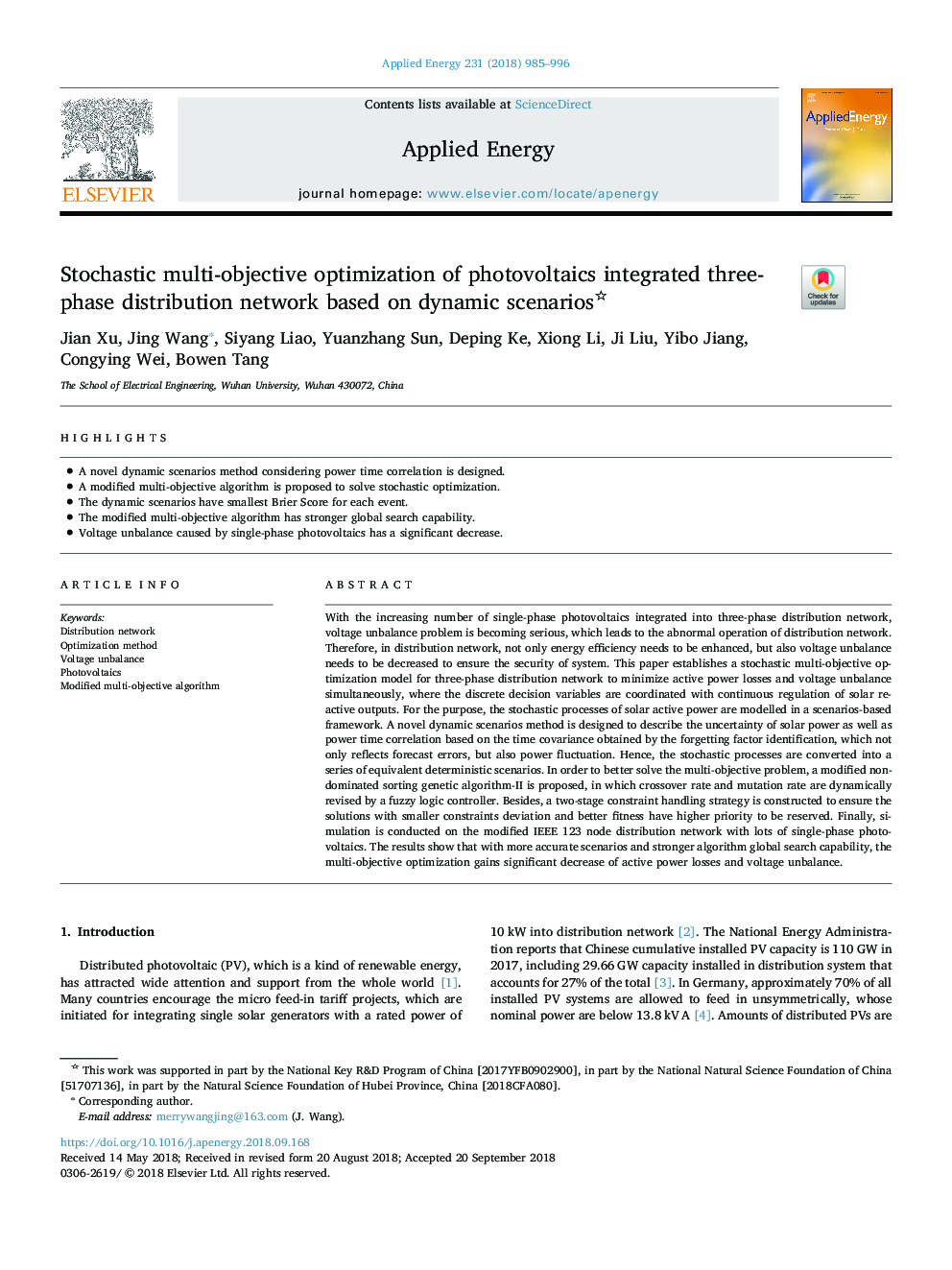| Article ID | Journal | Published Year | Pages | File Type |
|---|---|---|---|---|
| 11024336 | Applied Energy | 2018 | 12 Pages |
Abstract
With the increasing number of single-phase photovoltaics integrated into three-phase distribution network, voltage unbalance problem is becoming serious, which leads to the abnormal operation of distribution network. Therefore, in distribution network, not only energy efficiency needs to be enhanced, but also voltage unbalance needs to be decreased to ensure the security of system. This paper establishes a stochastic multi-objective optimization model for three-phase distribution network to minimize active power losses and voltage unbalance simultaneously, where the discrete decision variables are coordinated with continuous regulation of solar reactive outputs. For the purpose, the stochastic processes of solar active power are modelled in a scenarios-based framework. A novel dynamic scenarios method is designed to describe the uncertainty of solar power as well as power time correlation based on the time covariance obtained by the forgetting factor identification, which not only reflects forecast errors, but also power fluctuation. Hence, the stochastic processes are converted into a series of equivalent deterministic scenarios. In order to better solve the multi-objective problem, a modified non-dominated sorting genetic algorithm-II is proposed, in which crossover rate and mutation rate are dynamically revised by a fuzzy logic controller. Besides, a two-stage constraint handling strategy is constructed to ensure the solutions with smaller constraints deviation and better fitness have higher priority to be reserved. Finally, simulation is conducted on the modified IEEE 123 node distribution network with lots of single-phase photovoltaics. The results show that with more accurate scenarios and stronger algorithm global search capability, the multi-objective optimization gains significant decrease of active power losses and voltage unbalance.
Related Topics
Physical Sciences and Engineering
Energy
Energy Engineering and Power Technology
Authors
Jian Xu, Jing Wang, Siyang Liao, Yuanzhang Sun, Deping Ke, Xiong Li, Ji Liu, Yibo Jiang, Congying Wei, Bowen Tang,
